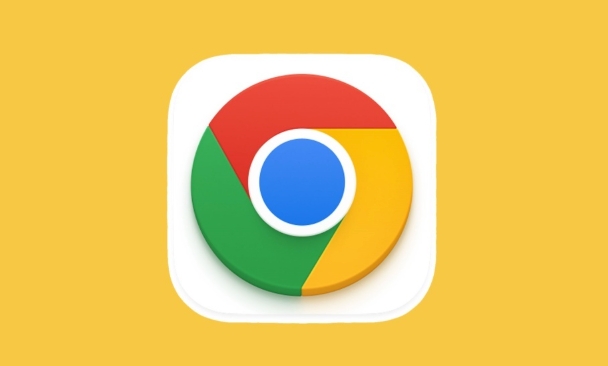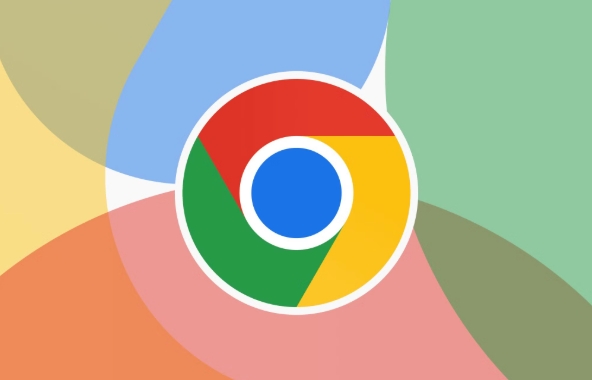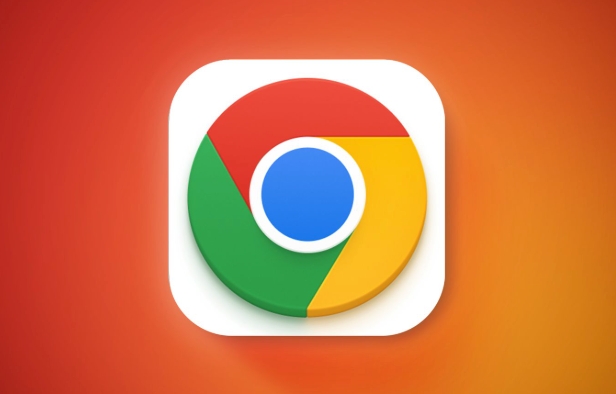How to fix Chrome failing to update with an error code
Aug 02, 2025 am 01:29 AMWhen Chrome cannot be updated and error codes appear, you can follow the following steps to solve the problem: 1. Check the network connection and system time to ensure stable networking and synchronize the time; 2. Manually trigger updates, check for updates in chrome://settings/help; 3. Clear Chrome update cache and delete relevant download folder content; 4. Troubleshoot conflicting software, temporarily disable antivirus software, firewall or other browsers; 5. Reinstall Chrome completely, delete user data folders after uninstalling and reinstall. The above methods can usually solve most local problems. If they still fail, you can further troubleshoot according to the specific error code.

Chrome failing to update with an error code can be frustrating, especially if you rely on the browser for work or daily browser. The good news is that most of these issues are fixed without needing technical expertise. Let's walk through some practical steps to get Chrome updating again.

1. Check Your Internet Connection and System Time
Before diving into more complex fixes, make sure your internet connection is stable. A weak or intermittent connection can cause download errors during updates.
Also, check your system clock. If your computer's date and time are incorrect, Chrome might fail to verify update files properly.

- Make sure Wi-Fi or Ethernet is connected
- Try loading a website in another browser to confirm connectivity
- On Windows: Right-click the clock > Adjust Date/Time > Sync now
- On Mac: Go to System Settings > Date & Time > Set Automatically
2. Run the Chrome Updater Manually
Sometimes Chrome tries to update in the background but fails silently. You can manually trigger an update:
- Open Chrome and go to
chrome://settings/help - It will automatically check for an update and try to install it
If this still shows an error, you may need to reinstall Chrome entirely or use the offline installer from Google's official site.

3. Clear Chrome's Update Cache
Like regular web cache, Chrome stores temporary update files. If these became corrupted, they can block future updates.
On Windows :
- Close Chrome completely
- Press
Win R, type%LOCALAPPDATA%\Google\Update, then hit Enter - Delete everything inside the
Downloadfolder - Restart Chrome and check for updates again
On Mac :
- Quit Chrome
- Open Finder > Go > Go to Folder (Cmd Shift G)
- Type
~/Library/Caches/com.google.SoftwareUpdate.* - Delete any related folders
- Reopen Chrome and try the update
4. Check for Conflicting Software
Antivirus programs, firewalls, or even other browsers can interfere with Chrome's ability to update.
Try temporarily disabling:
- Antivirus software
- Third-party firewall tools
- Any browser cleanup utilities
Also, make sure no other version of Chrome (like Chrome Beta or Canary) is conflicting with the main installation.
5. Reinstall Chrome Completely
If none of the above works, a full uninstall and reinstall often solves persistent update issues.
Steps:
- Uninstall Chrome via Control Panel (Windows) or Applications folder (Mac)
- Delete the Chrome user data folder:
- Windows:
%LOCALAPPDATA%\Google\Chrome - Mac:
~/Library/Application Support/Google/Chrome
- Windows:
- Download the latest Chrome installer from http://ipnx.cn/link/28557060cef0f58b8d918a2f8eac053f
- Install and open Chrome again
Note: This will remove saved passwords and settings unless you sign in and sync afterward.
Most Chrome update errors are due to simple local issues like network problems or corrupted files. Trying these steps one by one should clear up the problem in most cases. If you're still stuck, the exact error code can help narrow things down—searching for the specific code online usually points to a targeted solution.
Basically that's it.
The above is the detailed content of How to fix Chrome failing to update with an error code. For more information, please follow other related articles on the PHP Chinese website!

Hot AI Tools

Undress AI Tool
Undress images for free

Undresser.AI Undress
AI-powered app for creating realistic nude photos

AI Clothes Remover
Online AI tool for removing clothes from photos.

Clothoff.io
AI clothes remover

Video Face Swap
Swap faces in any video effortlessly with our completely free AI face swap tool!

Hot Article

Hot Tools

Notepad++7.3.1
Easy-to-use and free code editor

SublimeText3 Chinese version
Chinese version, very easy to use

Zend Studio 13.0.1
Powerful PHP integrated development environment

Dreamweaver CS6
Visual web development tools

SublimeText3 Mac version
God-level code editing software (SublimeText3)

Hot Topics
 Google Chrome Speed ??Browser Official Edition Portal
Jul 08, 2025 pm 02:30 PM
Google Chrome Speed ??Browser Official Edition Portal
Jul 08, 2025 pm 02:30 PM
Google Chrome is a free and fast multi-platform web browser developed by Google. It is known for its speed, stability and reliability. Chrome is based on the open source Chromium project and is widely used on devices such as desktops, laptops, tablets and smartphones. The browser has a clean interface and a wide range of customizable options, allowing users to personalize it according to their preferences. In addition, Chrome has a huge library of extensions that provide additional features such as ad blocking, password management and language translation, further enhancing the browsing experience.
 How to install Chrome extensions on mobile (Kiwi, etc.)
Jul 11, 2025 am 12:50 AM
How to install Chrome extensions on mobile (Kiwi, etc.)
Jul 11, 2025 am 12:50 AM
Android phones can install Chrome extensions through KiwiBrowser. KiwiBrowser is an open source browser based on Chromium on the Android side. It supports the installation of the Chrome Web Store extension. The process is: Open Kiwi and enter the Chrome store, search for extensions, and click "Add to Chrome" to complete the installation; when using it, you need to pay attention to network stability, extension compatibility, permission granting and installation quantity; other alternatives include FirefoxMobile and YandexBrowser, but Kiwi is still the most stable and convenient choice at present.
 How to pin extensions to the Chrome toolbar
Jul 02, 2025 am 12:28 AM
How to pin extensions to the Chrome toolbar
Jul 02, 2025 am 12:28 AM
To pin Chrome extensions to the toolbar, first visit chrome://extensions/ or enter the extension page through the menu, find the target extension and check "Show in the toolbar". Some versions support dragging and dropping to adjust the order of icons. 1. Click the three dots in the upper right corner → More tools → Extensions; 2. Find the desired extension and enable the "Show in Toolbar" option; 3. Optional: Drag the icon to adjust the position in the toolbar. Note: Not all extensions support display in the toolbar, and if there are too many icons, they will be automatically hidden.
 Is Chrome Remote Desktop secure
Jul 02, 2025 am 12:40 AM
Is Chrome Remote Desktop secure
Jul 02, 2025 am 12:40 AM
ChromeRemoteDesktop is relatively safe, but the following three points should still be noted: 1. Its encryption mechanism relies on Google account security. It is recommended to enable two-step verification and regularly check the login device; 2. The permission control is weak. After connecting, the other party can fully control the computer. It should accept the request carefully and cancel the temporary pairing in a timely manner; 3. There are potential vulnerabilities, and the software needs to be updated and uninstalled components that are no longer used to reduce risks.
 The Top 11 Greasemonkey and Tampermonkey User Scripts
Jul 02, 2025 am 09:03 AM
The Top 11 Greasemonkey and Tampermonkey User Scripts
Jul 02, 2025 am 09:03 AM
Auto Close YouTube Ads Customizable settings. Support YouTubers with shorter ads. Three menu options. What We Don't Like Doesn't have auto skip for banner ads. Some users report bugs. Only works on YouTube. This configurable scrip
 How to change the user agent string in Safari without extensions?
Jul 11, 2025 am 12:48 AM
How to change the user agent string in Safari without extensions?
Jul 11, 2025 am 12:48 AM
On macOS, you can modify Safari's UserAgent through developer tools or terminals, but iOS/iPadOS does not support it. The specific methods are: 1. Use the developer tools to modify temporarily: select preset UA after enabling the development menu; 2. Permanent modification through the terminal: enter the command to write a custom UA; 3. iOS/iPadOS cannot be modified directly, and it needs to rely on a third-party application or browser.
 Chrome history shortcut
Jul 02, 2025 am 12:34 AM
Chrome history shortcut
Jul 02, 2025 am 12:34 AM
Chrome History Shortcuts can improve access efficiency in a variety of ways. 1. Use Ctrl H (Windows/Linux) or Cmd H (Mac) to quickly open the history page; 2. Enter keywords in the address bar to search related history records, and search more accurately with time filters such as "today:"; 3. Filter specific website access records by entering the URL or keyword in the search box at the top of the history page; 4. Press the Alt down arrow to expand the historical suggestions in the address bar to speed up the URL; 5. Add commonly used historical pages to bookmark Ctrl D or Cmd D for long-term quick access. These tips can significantly improve browsing efficiency and save time.
 What firewall ports does Chrome Remote Desktop use
Jul 13, 2025 am 12:43 AM
What firewall ports does Chrome Remote Desktop use
Jul 13, 2025 am 12:43 AM
ChromeRemoteDesktopusesport443(HTTPS)astheprimaryportforsecureconnections,andoccasionallyport80(HTTP)asafallback.ItalsoleveragesSTUN,TURN,andICEprotocolstoestablishpeer-to-peerconnections,withTURNactingasarelayifdirectconnectionsfail.Toensuresmoothop






